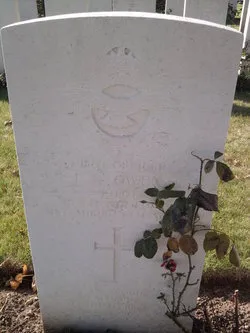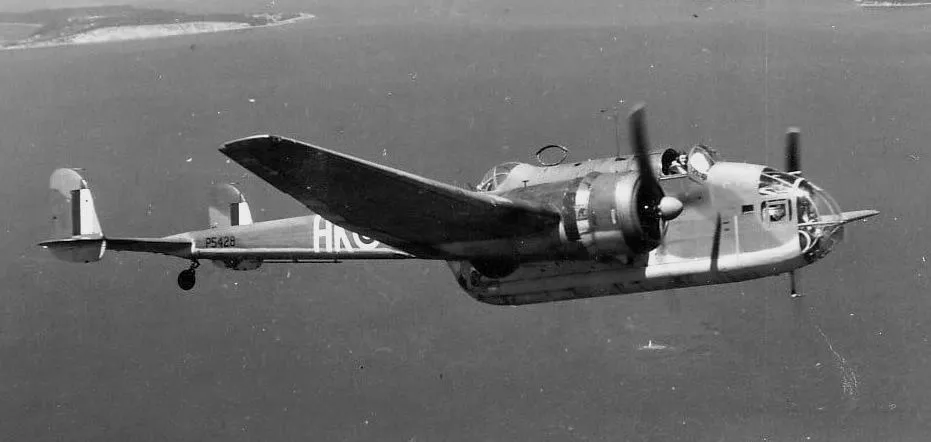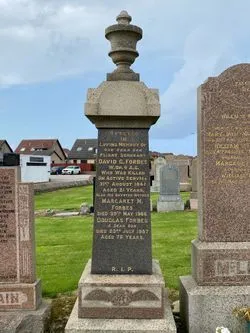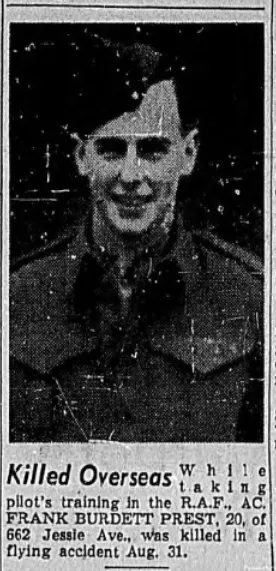Owen, Patrick Richard (Pilot Officer)
Killed in Flying Accident 1941-August-31


Birth Date: 1920
Born:
Parents: Son of William and Ellen Phoebe Owen, of Southgate, Middlesex
Spouse:
Home: Southgate, Middlesex
Enlistment:
Enlistment Date: unkown date
Service
RAFVR
Unit
44 (B) Sqn- Squadron (RAF)
Fulmina Regis Lusta The king's thunderbolts are righteous
Base
RAF Waddington
Rank
Pilot Officer
Position
Pilot
Service Numbers
61285
Home
Crew or Other Personnel
Hampden AD939
Mission
Hampden I AD939
Operational 1941-August-31 to 1941-August-31
44 (B) Sqn (RAF) RAF Waddington
44 Rhodesia Squadron (Fulmina regis lusta) RAF Waddington. Hampden I aircraft AD 939 lost in a mid-air collision with 412 squadron RCAF Spitfire IIa aircraft P 8586 with the loss of all three aircrew members on the Hampden as well as the pilot of the Spitfire
Leading Aircraftman F B Prest (RAFVR) (Can), Pilot Officer P R Owen (RAFVR) and Flight Sergeant D G Forbes (RAFVR) all on Hampton AD 939 as well as Pilot Officer W R Hughes (RCAF) were killed in this flying training accident
The Hampton crashed in fields just off White Lane near RAF Waddington, while the Spitfire crashed into the nearby North Sea
![]() Royal Air Force Serial and Image Database
Royal Air Force Serial and Image Database
![]() Crash of a Handley Page HP 52 Hampton I at RAF Waddington: 3...
Crash of a Handley Page HP 52 Hampton I at RAF Waddington: 3...
Hampden serial: AD939

Handley Page Hampden (Serial No. P5428), of No. 32 Operational Training Unit at RCAF Patricia Bay, British Columbia, in the torpedo-bomber training role between May 1942 and February 1944.
Handley Page developed a modern stressed-skin mid-wing monoplane, powered by Bristol Pegasus radial air cooled engines, with its first flight in 1936. It had the most advanced wings available at the time, giving it a remarkably low landing speed of 73 mph for an aircraft of its size, with a top speed of 265 mph. The Hampden had a short, narrow but tall main fuselage with a very slender tail unit. This configuration led to the nicknames "Flying Panhandle" and "Flying Suitcase". At the end of the war, no complete or partial Hampden aircraft were retained for museum display.
The Hampden served in the early stages of the war, bearing the brunt of the early bombing war over Europe, taking part in the first night raid on Berlin and in the first 1000-bomber raid on Cologne. In Canada, Hampdens were built by six companies that formed Associated Aircraft. There were three in Ontario and three in Quebec, hence they were identified as the Ontario Group and Quebec Group. They supplied all the the components to the two assembly plants. The Ontario Group's assembly plant was at the Malton Airport, while the Quebec group's assembly plant was at the St. Hubert Airport. Canadian Museum of Flight and Harold A Skaarup web page


